Citizenpedia
Citizenpedia is a Human-Computation enabling component which complements e-government environments with a collaborative space where citizens and civil servants share and exploit accessible knowledge about public procedures, and more specifically, where citizens can solve their doubts and actively take part in the enhancement of e-services. To that end, Citizenpedia has been designed, as a participation (one of the key pillars of Open Government) fostering component comprised of three complementary tools, namely Question & Answer Engine (QAE), Collaborative Procedure Designer (CPD) and Servicepedia.
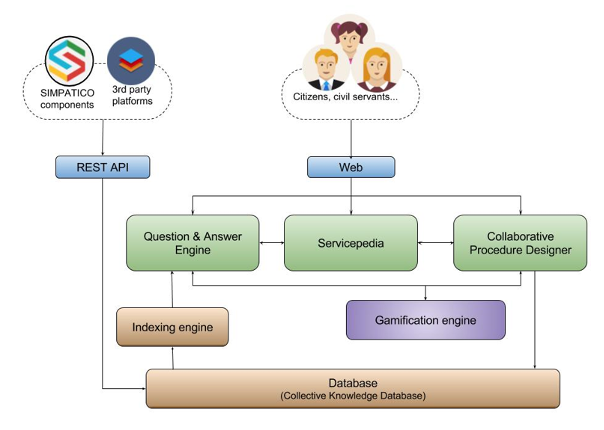
Question & Answer engine
The Question & Answer Engine (QAE) is a tool which provides a mechanism where citizens post and resolve doubts regarding e-services and public administrative procedures. The chosen look-and-feel for this tool is similar to other popular question & answer ones, for example Quora (https://www.quora.com).
The main functionality of QAE is to create and answer questions following a crowdsourcing approach about public administration procedures.
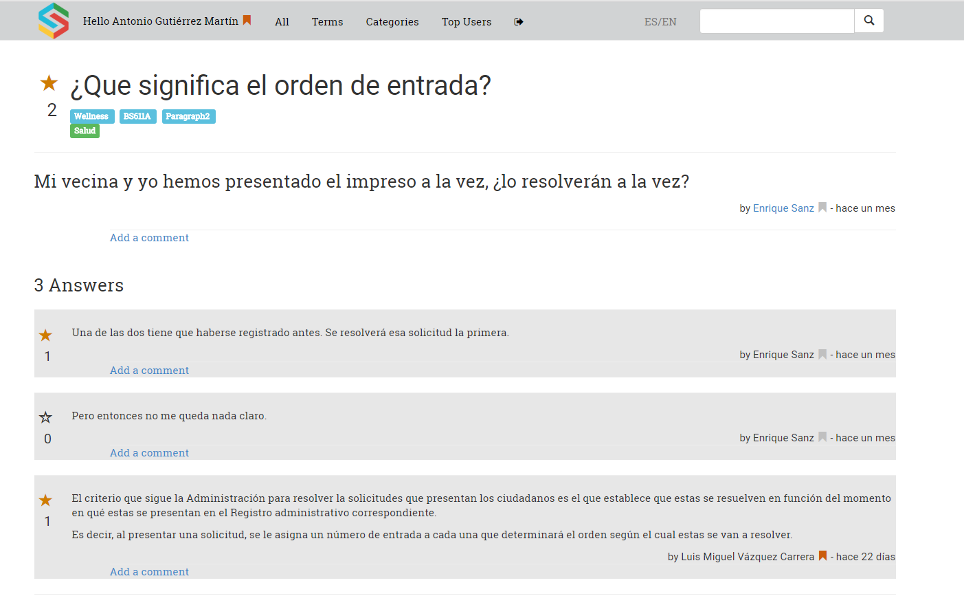
Users are encouraged to contribute contents in a public manner, with the goal of keeping the generated information to remain over the time. This is usual in QAE places in the field of engineering (e.g. Stack Overflow), where sometimes an answer written two or three years past in time is useful for the user looking for a doubt. In addition, questions are searchable and sortable.
The QAE design considers to have two main roles: user and moderator. Initially, every citizen is a user and every civil servant is a moderator. Users can search along QAE and post content. Moderators have higher privileges, i.e., permission to edit/delete contents from other users, addressing the problem of low quality contents sometimes resulting from user contributions.
In order to keep the user engaged, a rewarding and reputation mechanism is considered. Each time a user conducts an action (e.g. posting/answering a question, leaving a comment, rating an answer and so on), it is recorded and several points are granted. Once certain amount of points are exceeded, badges are given. This enables users to gain reputation and distinguish the most active participants in the community. In addition, once a user reaches certain level of reputation, he/she gains moderation rights.
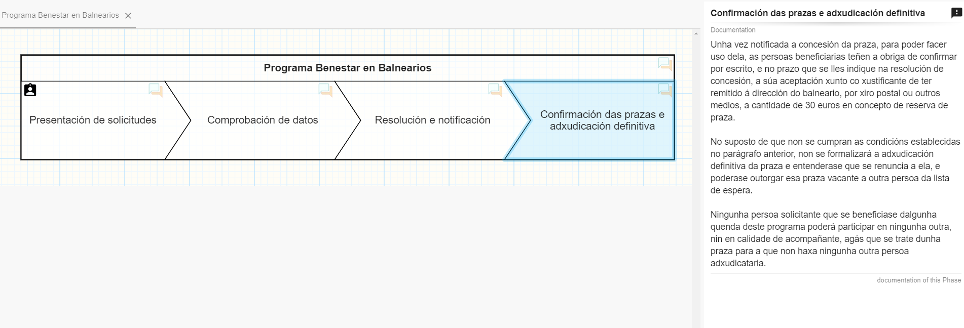
Collaborative Procedure Designer
The Collaborative Procedure Designer (CPD) is a tool to describe current administrative procedures in the form of flowcharts/diagrams that enables citizens to comment on them.
The core of the CPD is a model that allows the definition of multiple hierarchical views, each one providing a representation of the procedure with a growing level of detail.
Currently, the CPD offers two views to describe the procedures: the value-chain view and the interaction view. The value-chain provides information concerning the sequential phases that the procedure is broken into. If an e-service needs to be used in a procedure phase, information about it is also given. From this view, it is possible to understand the name of the phases and realize the phases’ temporal order.
By expanding a specific phase, an interaction view gets displayed. This view shows a flow of the interactions between the citizen and the PA that are carried out in that phase. For any interaction, it is pointed out who of the two actors is the interaction’s initiator. Also, the communication channel through which the interaction will occur is explicitly indicated by means of specific icons.
Servicepedia
Servicepedia integrates the descriptions of the public services with the information on the QAE and CPD to have all the elements contextualized. This tools is the one which uses, directly or indirectly, most of the concepts of the SIMPATICO interaction model.
Thanks to this implementation, citizens can access to information about procedures, procedure steps, e-service, e-service description forms, fields, blocks, paragraphs and interaction workflow model. In addition, citizens have the opportunity to see all the questions, answers and terms related to all these elements. It offer a simple to grasp bird’s eye view of administrative procedures.
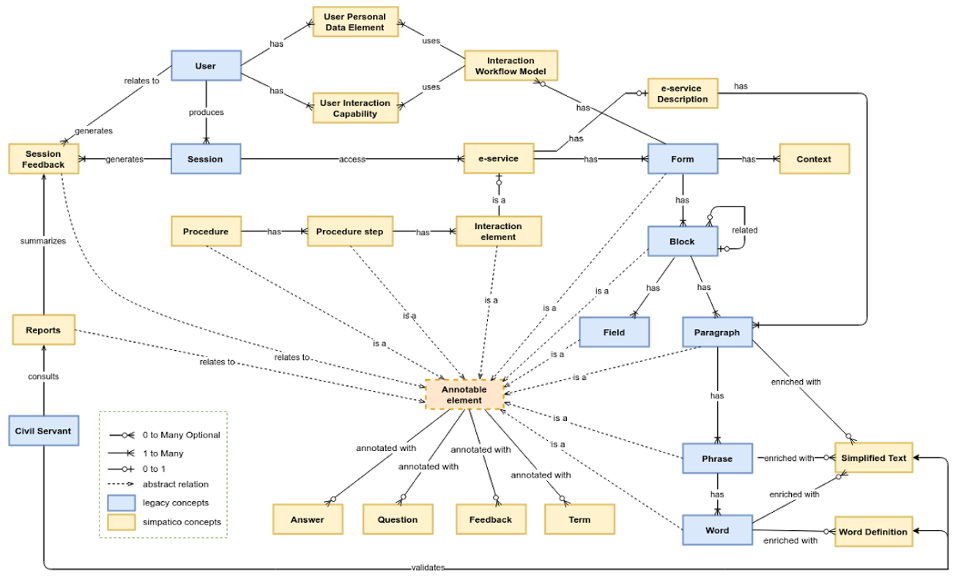
What is the problem?
The take-up of e-services which are part of public procedures that citizens & companies can use to communicate or initiate requests with PAs is too low. Only half of Internet of users have actually ever tried to use the online channel for interacting with public administrations. Indeed, one of the main problems of current e-services is that they are built following an administration-centric approach rather than according to the citizens’ needs (user-centric approach). Despite the large and increasing availability of e-services, users’ poor computer literacy, their low familiarity with administrative procedures, and their limited understanding of what concerns legal and technical jargon, can make comprehending these online services and the accompanying documentation very difficult if not impossible. The same is often true for companies, in particular micro and small enterprises, faced with highly complex procedures and documents outside their field of expertise.
What is the solution?
Citizenpedia is devised to help democratizing the access to e-services by offering to a given e-service consumer other stakeholders’ contributed contextual information which will help them when interacting with the e-service. Thanks to Citizenpedia, users are able to identify the different stages of a public procedure, the complex concepts dealt with in the e-services composing such procedure and browse through the problems and solutions contributed by other uses whilst interacting with those very same procedures.
Who is the beneficiary?
Companies, Municipalities, PAs and Citizens who interact by means of e-services, have thanks to Citizenpedia an augmented complementary view which aids them in the understanding and completion of public procedures.
Citizenpedia features
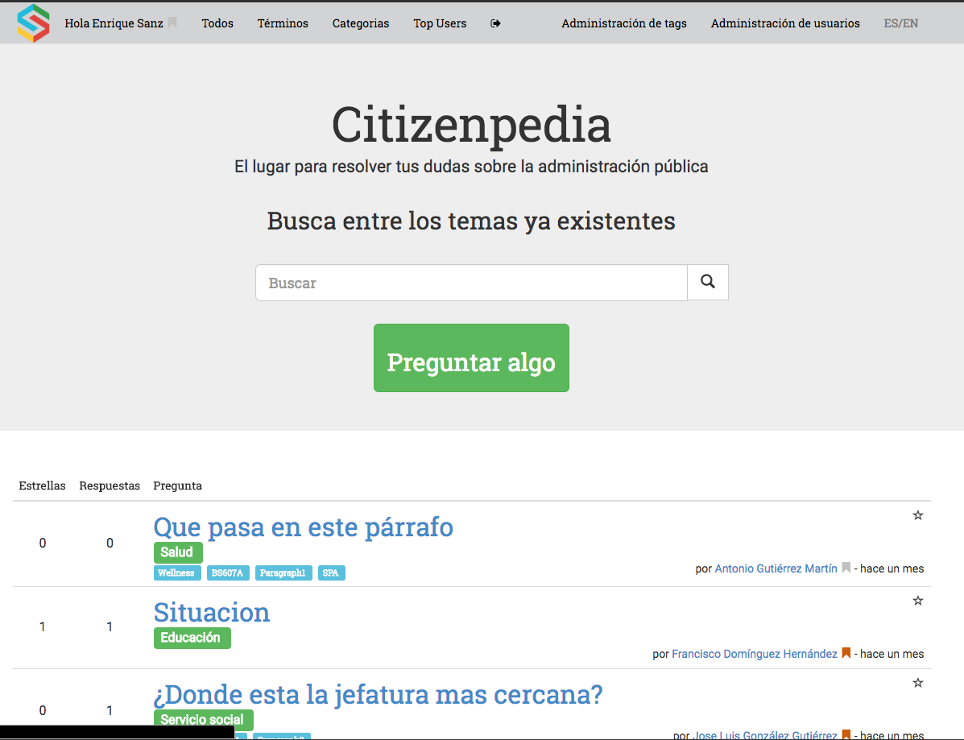
Access to the main page
From this page, users can search for terms developed in questions, answers or terms managed by QAE.
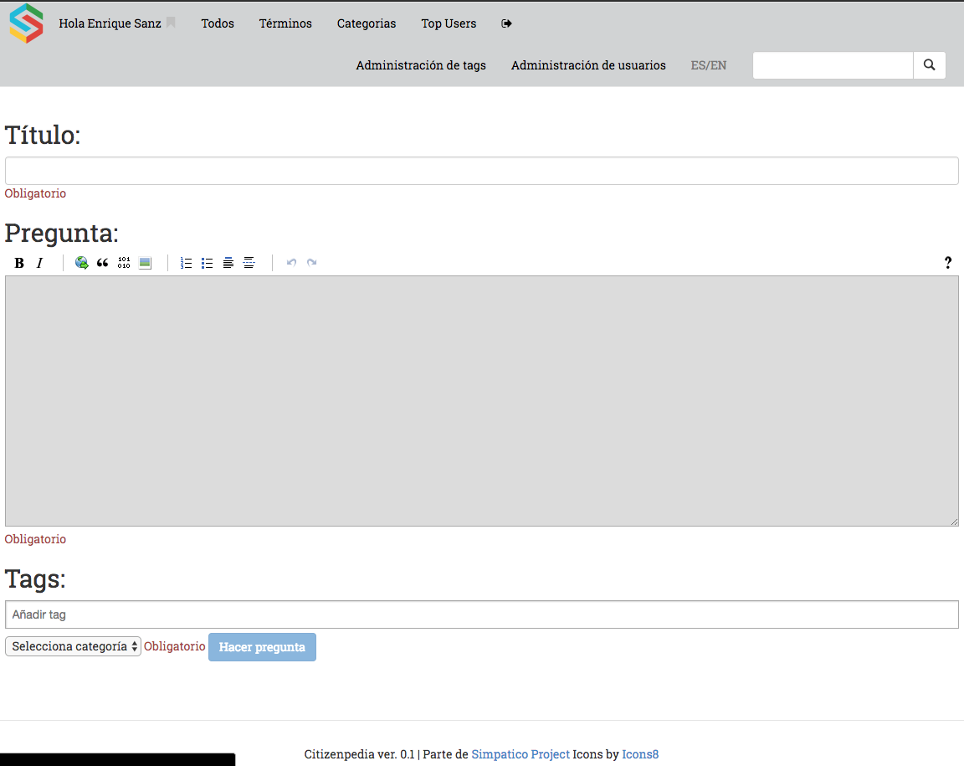
Issue a new question
Questions can be freely posted by users without linking them to any specific procedure.
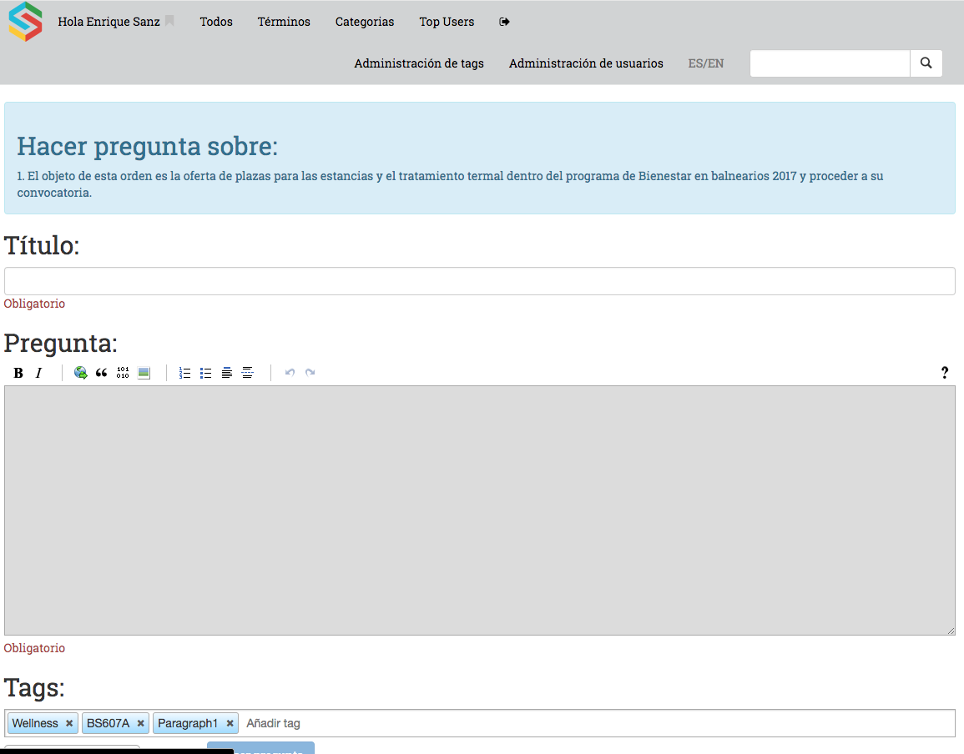
Issue a question from IFE
However, more interestingly users browsing an e-service are able to associate questions to specific areas of the documentation of an e-service.
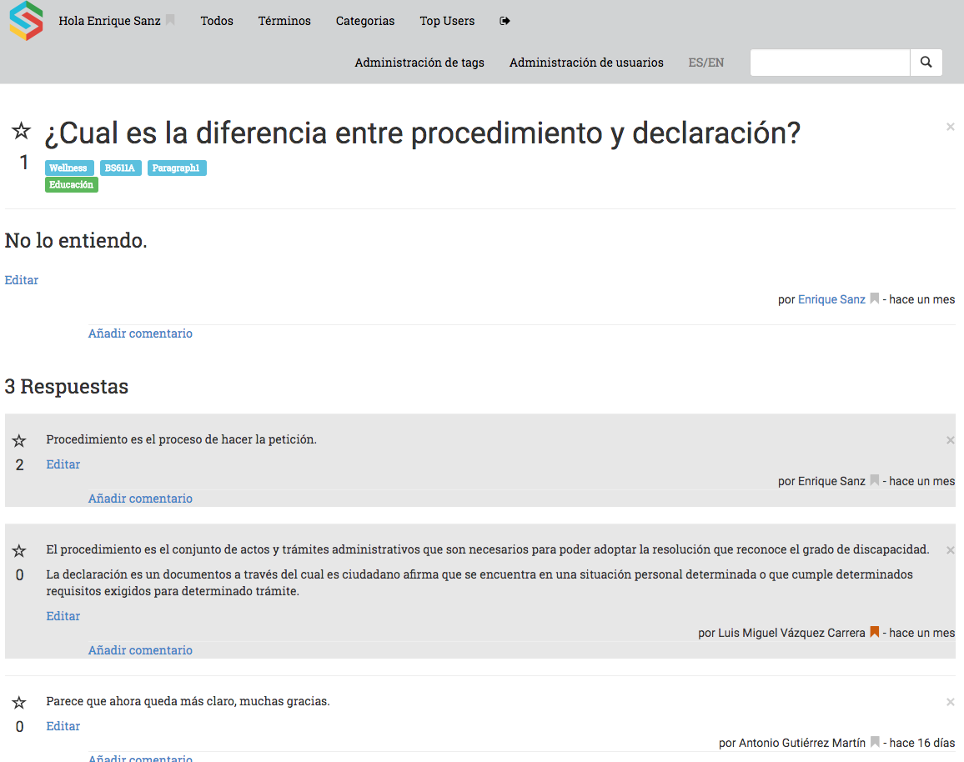
View answers associated to a question
A question might have several answers associated. Civil servant (public procedure administrator) answers are greyed out.
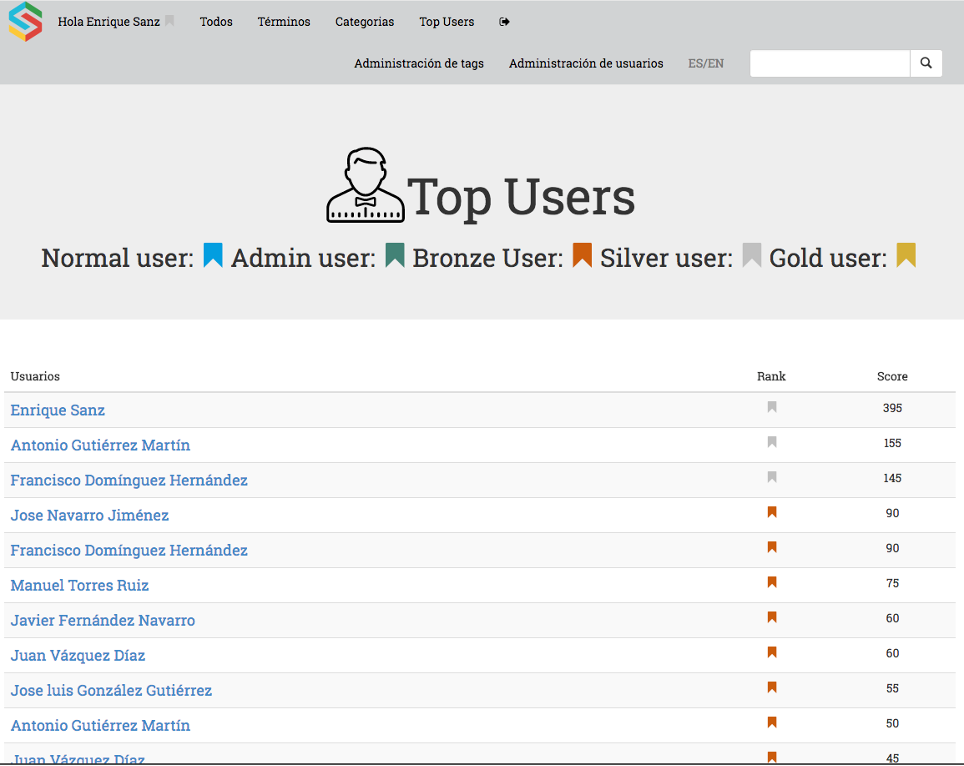
View of most active and influential contributors
Every time a user contributes to QAE with a new question, answer, comment or rating gains some points. This snapshot shows those users who have undertaken more contributions.
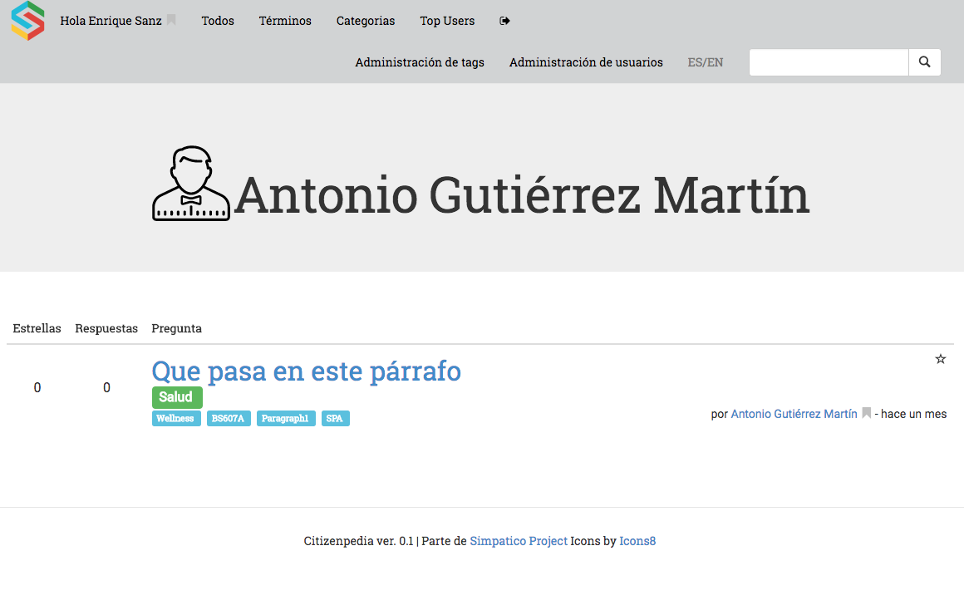
View contributions of a given user
When selecting a user you list all the contributions of such user.
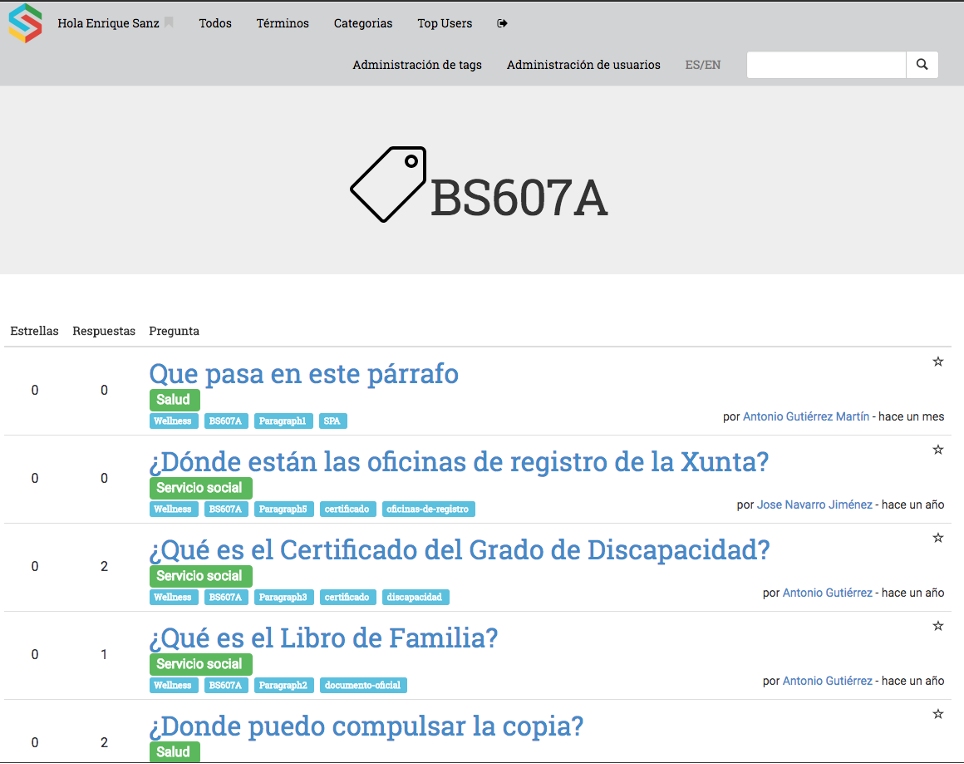
Contributions associated to a tag
A question might have several answers associated. Civil servant (public procedure administrator) answers are greyed out.
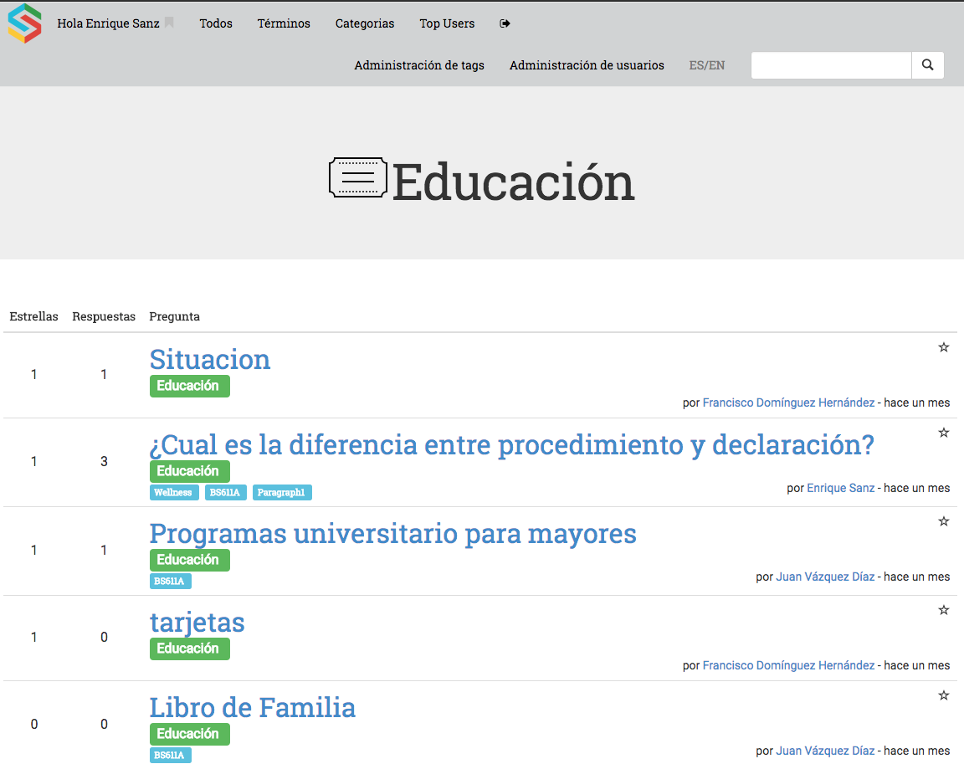
Contributions associated to an e-service category
Every time a user contributes to QAE with a new question, answer, comment or rating gains some points. This snapshot shows those users who have undertaken more contributions.

... and much more
On the GitHub page of the tool you can explore the source code and all the features of Citizenpedia
